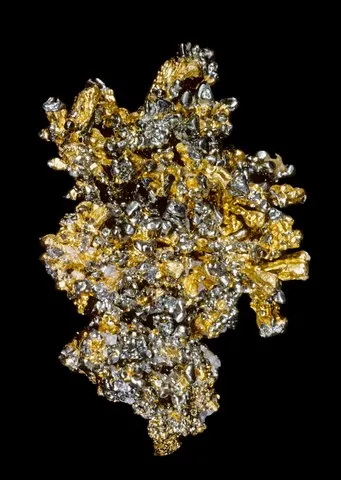ALTAITE
Class : Sulfides and sulfosalts
Subclass : Tellurides
Crystal System : Cubic
Chemistry : PbTe
Rarity : Rare
Altaite is a rare hydrothermal mineral from auriferous epithermal veins. It owes its name to its site of discovery : the Altai Mountains in Kazakhstan. Its crystals are small and rare, with cubic or octahedral facies. Altaite usually occurs in tin-white masses, very dense (8.2), associated with galena, gold and other tellurides (hessite, sylvanite, calaverite, etc...). It is a tellurium ore generally recovered as a by-product in gold mines.
Photo features altaite on native gold approximately 4 cm from Browns Flat, Bald Mountain, Calaveras Co., California, USA - Harvard University Collection © Rock Currier.
Altaite in the World
Twinning
No twin known for this mineral species.
Fakes and treatments
No fake reported for this mineral species.
Hardness : 2 to 3
Density : 8.2
Fracture : Sub-conchoidal
Trace : Black
TP : Opaque
RI : Not measurable
Birefringence : None
Optical character : None
Pleochroism : None
Fluorescence : None
Solubility : -
Magnetism : None
Radioactivity : None

